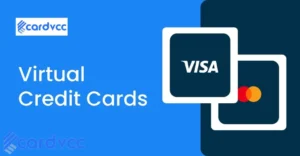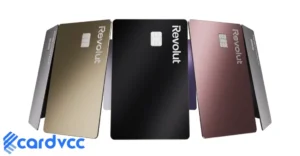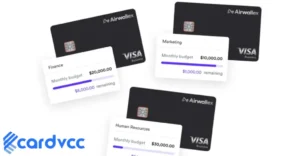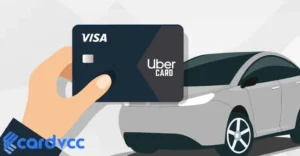To block a charge on a debit card, contact your bank immediately. Use online banking or call customer service for assistance.
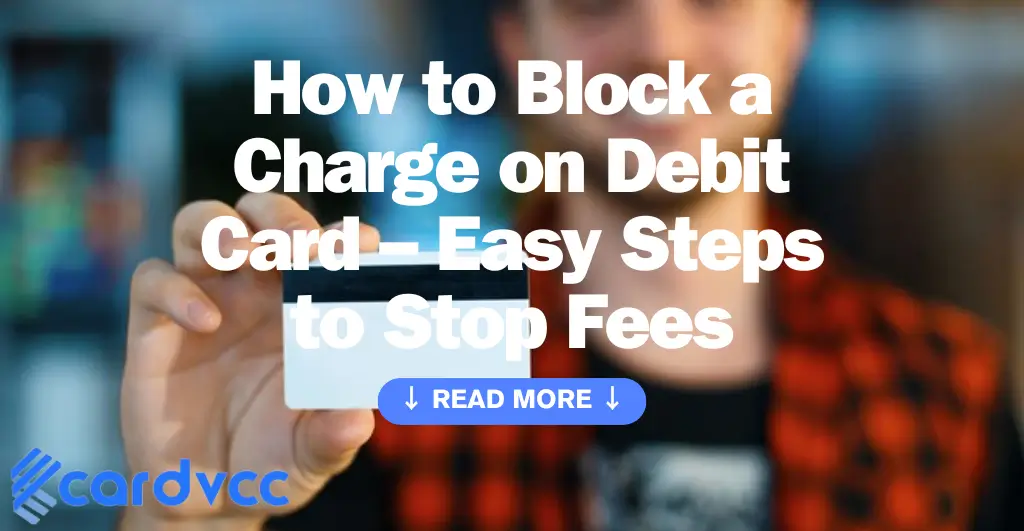
Blocking a charge on your debit card is essential to prevent unauthorized transactions and safeguard your finances. Quick action can protect your account from potential fraud. Most banks offer multiple ways to block a charge, including mobile apps, online banking platforms, or dedicated customer service hotlines.
Knowing how to efficiently manage and monitor your debit card activity can give you peace of mind. This guide will walk you through the steps to block a charge, ensuring your financial security remains intact. Stay informed and proactive to keep your hard-earned money safe from fraudulent activities.
Introduction To Blocking Charges
Blocking a charge on your debit card can save you money. It helps protect your account from unauthorized transactions. This guide explains how you can block a charge on your debit card.
Importance Of Blocking Charges
Blocking charges is vital for your financial security. It prevents unauthorized transactions. This action can help you avoid extra fees. Here are some key reasons:
- Protect your money – Unauthorized charges can drain your account.
- Avoid extra fees – Some charges may incur additional costs.
- Maintain control – Blocking charges helps you manage your finances better.
Common Reasons For Blocking
There are many reasons you might need to block a charge. Some common ones include:
| Reason | Description |
|---|---|
| Fraudulent Activity | Suspicious transactions on your card. |
| Unauthorized Charges | Charges you did not approve. |
| Incorrect Amount | Charges that are higher than expected. |
| Recurring Payments | Stopping a subscription or service. |
Blocking a charge is easy. Simply contact your bank. Provide the necessary details. Keep an eye on your account to ensure the charge is blocked.
Immediate Steps To Take
Blocking a charge on your debit card is crucial. Acting quickly helps protect your money. Here are immediate steps to take.
Contacting Your Bank
First, reach out to your bank. Use the customer service number on your card.
- Explain the situation clearly.
- Provide your account details.
- Request the charge to be blocked.
Banks have fraud departments. They can help you stop unauthorized charges. They may also provide additional guidance.
Freezing Your Card
Next, freeze your card. This prevents further unauthorized use.
Most banks offer card freezing through their mobile apps. Follow these steps:
- Open your bank’s app.
- Navigate to the card management section.
- Select the option to freeze your card.
Freezing your card is temporary but effective. It gives you time to address the problem.
If you can’t freeze your card through the app, call your bank. Ask them to freeze it for you.
Once your card is frozen, no new charges can be made. This stops further unauthorized transactions.
Using Online Banking Tools
Blocking a charge on your debit card can be done easily using online banking tools. These tools offer a convenient way to manage your finances without visiting a bank. Below are detailed steps to guide you through the process using your bank’s website and mobile banking apps.
Navigating The Bank’s Website
First, you need to access your bank’s website. Look for the login button and enter your credentials. Most banks have a secure login process to protect your information.
Once logged in, search for the “Transactions” or “Account Activity” section. This section lists all recent transactions. Locate the charge you want to block.
After finding the charge, click on it to see more details. There should be an option to dispute or block the charge. Follow the on-screen instructions to complete the process.
Utilizing Mobile Banking Apps
Mobile banking apps make blocking a charge even more convenient. Download your bank’s app from the app store. Open the app and log in using your credentials.
Once inside the app, navigate to the “Transactions” or “Account Activity” section. This is usually found on the main dashboard or menu.
Find the charge you want to block. Tap on it to view more details. Look for the option to dispute or block the charge. Follow the prompts to finish blocking the charge.
Using mobile banking apps can be faster and more accessible. It allows you to manage your finances on the go.
Both methods offer a secure and efficient way to block unwanted charges on your debit card.
Disputing Unauthorized Charges
If you spot an unauthorized charge on your debit card, act quickly. Disputing the charge can help you get your money back. Follow these steps to dispute unauthorized charges effectively.
Filing A Dispute
First, contact your bank or card issuer immediately. Use their customer service number. Inform them about the unauthorized charge. They may ask you to fill out a dispute form. You can usually find this form on their website. Complete it carefully.
Provide details about the charge. Mention the date and amount. Describe why you believe it is unauthorized. Submit the form as instructed by your bank.
Providing Necessary Documentation
Next, gather all required documents. This may include:
- Your account statement shows the charge
- Any receipts or proof of purchase
- Correspondence with the merchant
Submit these documents with your dispute form. Your bank may also ask for a police report. If so, file a report and get a copy.
Keep copies of everything you send. This helps if you need to follow up later. Your bank will investigate the dispute. They may contact you for more information. Be sure to respond promptly.
By following these steps, you can help resolve unauthorized charges. Protect your money and keep your account secure.

Monitoring Your Account
Monitoring your account is crucial to block unauthorized charges on your debit card. Regular checks help spot suspicious activity. Here are some effective ways to monitor your account:
Setting Up Alerts
Set up alerts for every transaction. This keeps you updated on your spending. Alerts can be set for:
- Every purchase
- Withdrawals
- Unusual activity
Most banks offer this service for free. You can receive alerts via SMS or email. This helps you act quickly if you see a suspicious charge.
Regularly Reviewing Statements
Review your statements regularly. This can be done weekly or monthly. Look for any unfamiliar charges. If you find any, report them immediately. Here’s how you can review your statements:
- Log into your online banking account.
- Download the latest statement.
- Check each transaction carefully.
Keeping a close eye on your statements helps catch errors. It also helps you understand your spending habits better.
| Tip | Description |
|---|---|
| Set Alerts | Get notified for every transaction. |
| Review Statements | Check your statements weekly or monthly. |
Preventive Measures
Blocking a charge on your debit card can be stressful. Taking preventive measures can help you avoid unauthorized transactions. Here are some ways to protect your debit card.
Using Secure Websites
Always shop on websites with a secure connection. Look for HTTPS in the URL. The ‘S’ stands for secure. It means your data is encrypted. Avoid sites with HTTP only.
Check for a padlock icon in the address bar. This indicates a secure site. Do not enter your card details if the icon is missing.
Use known and trusted websites for shopping. Unknown sites may not protect your data. Read reviews and check ratings before shopping on a new site.
Avoiding Public Wi-fi
Public Wi-Fi networks are not secure. Avoid using them for online shopping. Hackers can easily intercept your data on these networks.
Use a VPN if you must use public Wi-Fi. A VPN encrypts your data. It makes it harder for hackers to access your information.
Turn off automatic Wi-Fi connections. This prevents your device from connecting to unsafe networks.
| Tip | Benefit |
|---|---|
| Use Credit Cards | They often offer better fraud protection. |
| Enable Alerts | Get instant notifications of transactions. |
| Monitor Statements | Catch unauthorized charges quickly. |
By following these preventive measures, you can protect your debit card from unauthorized charges. Stay vigilant and keep your information safe.
Understanding Bank Policies
Blocking a charge on your debit card can be a hassle. Understanding bank policies can make the process easier. Each bank has its own rules. Knowing these rules can help you act fast. Let’s dive into this topic with some key points.
Reading Terms And Conditions
Start by reading the terms and conditions of your bank. This document contains crucial information. Look for sections about blocking charges. Pay attention to any fees involved. Note the steps you need to take.
Here are some common points to look for:
- Time limits for blocking a charge.
- Contact methods for customer service.
- Required documentation.
Reading this document can save you time and stress.
Knowing Your Rights
Knowing your rights is essential. Banks must follow certain laws. These laws protect you as a consumer. For example, in many places, you can block unauthorized charges. The bank must investigate these charges.
Here are some rights you might have:
- The right to dispute a charge.
- The right to a temporary hold on your funds.
- The right to a refund if the charge is proven false.
Familiarize yourself with these rights. It can help you resolve issues quickly.
Seeking Further Assistance
Sometimes, blocking a charge on your debit card requires more than just contacting your bank. You may need to seek further assistance to resolve the issue effectively. Below are some steps to take when you need additional help.
Contacting Consumer Protection Agencies
If the bank can’t help, contact a consumer protection agency. These agencies can help resolve disputes and protect your rights as a consumer.
- Federal Trade Commission (FTC): They handle fraud and deceptive practices. Visit their website to file a complaint.
- Consumer Financial Protection Bureau (CFPB): They focus on financial products and services. You can submit a complaint online.
- State Attorney General’s Office: Each state has an office to handle consumer issues. Check their website for more information.
Hiring Legal Help
If you’re still unable to resolve the issue, hiring legal help might be necessary. A lawyer can provide professional advice and take legal action if needed.
| Type of Legal Help | Description |
|---|---|
| Consumer Protection Lawyer | Specializes in consumer rights and can help with disputes. |
| Financial Lawyer | Focuses on financial issues, including fraudulent charges. |
When hiring a lawyer, consider the following:
- Check their experience in handling similar cases.
- Ask about their fees and payment structure.
- Look for reviews or ask for references.
Seeking further assistance can be crucial in resolving disputes. Don’t hesitate to take these steps to protect your finances and rights.

Frequently Asked Questions
How Can I Block A Charge On My Debit Card?
To block a charge on your debit card, contact your bank’s customer service. Request them to stop the specific transaction. They may ask for transaction details.
Can I Block A Pending Debit Card Charge?
Yes, you can block a pending debit card charge. Contact your bank immediately. Provide them with the transaction details.
What Is The Process To Dispute A Debit Card Charge?
To dispute a debit card charge, contact your bank. Inform them of the unauthorized transaction. They will guide you through the dispute process.
Is There A Fee To Block A Debit Card Charge?
Most banks do not charge a fee to block a debit card charge. However, check with your bank for specific policies.
Conclusion
Blocking a charge on your debit card is crucial for financial security. Follow the steps outlined to protect your funds. Always monitor your account regularly. Contact your bank immediately if you notice unauthorized transactions. Staying vigilant ensures your financial safety and peace of mind.

